turbine是怎么收集指标数据的
turbine是怎么收集指标数据的
我们通过spring cloud图形化dashboard是如何实现指标的收集展示的知道了,图形化的指标是从turbine获取到指标数据的。那么turbine的数据是从哪里来的呢?
1、数据来源
我们通过url:http://localhost:10000/turbine.stream?cluster=default可以获取到指标的json数据。那么指标数据又是从何处获取到的。
答案是:从各个服务的/manage/hystrix.stream端点获取的
2、turbine架构设计
turbine官方的github地址:
https://github.com/Netflix/turbine/wiki
可以找到turbine的架构设计

详细信息参考
https://github.com/Netflix/Turbine/wiki/Design-And-Architecture-(1.x)
说明:turbine启动的时候,会去连接需要监控的主机,建立起监听,每一个实例会有一个监听。当实例监听从各个服务获取到数据的时候,会将数据填充到派发器dispatcher中,由派发器将数据输出到各个客户端。
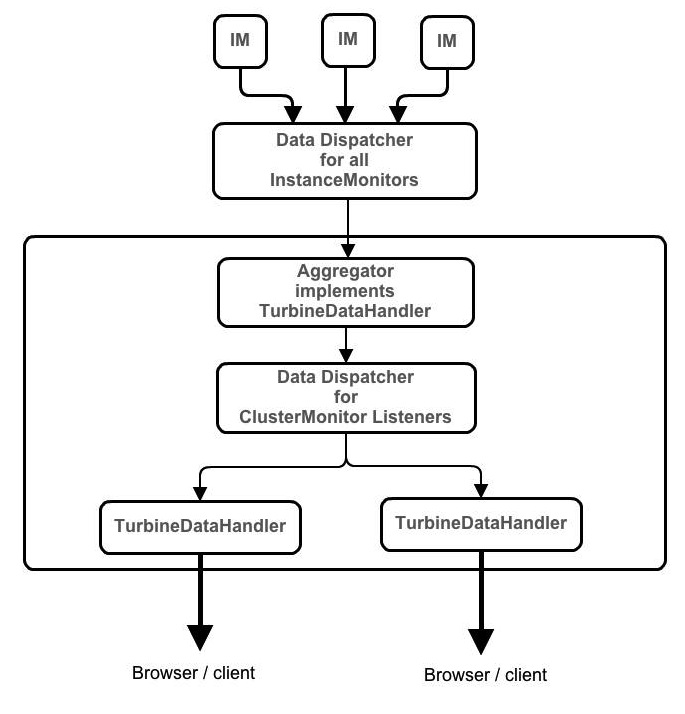
3、源码阅读
turbine的实现在turbine核心包下
com.netflix.turbine:turbine-core
在该包下,可以找到几个关键的类
InstanceMonitor、HandlerQueueTuple、TurbineDataDispatcher、TurbineStreamServlet
我们启动调试的时候,可以看到
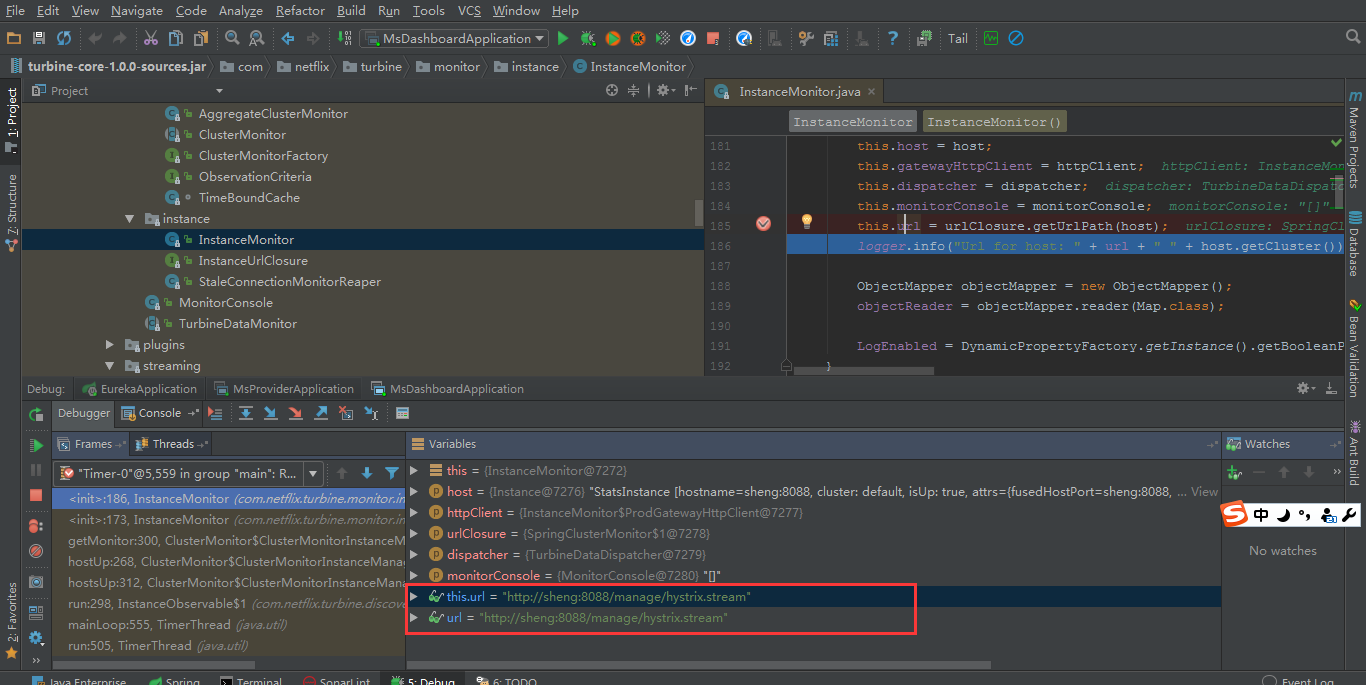
实例的url其实是指向具体需要监控的实例的端点,即
http://sheng:8088/manage/hystrix.stream
查看这个链接我们可以看到

InstanceMonitor启动监听
public void startMonitor() throws Exception {
// This is the only state that we allow startMonitor to proceed in
if (monitorState.get() != State.NotStarted) {
return;
}
taskFuture = ThreadPool.submit(new Callable<Void>() {
@Override
public Void call() throws Exception {
try {
//初始化,连接到具体实例上
init();
monitorState.set(State.Running);
while(monitorState.get() == State.Running) {
//关键代码
doWork();
}
} catch(Throwable t) {
logger.warn("Stopping InstanceMonitor for: " + getStatsInstance().getHostname() + " " + getStatsInstance().getCluster(), t);
} finally {
if (monitorState.get() == State.Running) {
monitorState.set(State.StopRequested);
}
cleanup();
monitorState.set(State.CleanedUp);
}
return null;
}
});
}
private void init() throws Exception {
HttpGet httpget = new HttpGet(url);
HttpResponse response = gatewayHttpClient.getHttpClient().execute(httpget);
HttpEntity entity = response.getEntity();
InputStream is = entity.getContent();
//初始化一个输入流
reader = new BufferedReader(new InputStreamReader(is));
int statusCode = response.getStatusLine().getStatusCode();
if (statusCode != 200) {
// this is unexpected. We probably have the wrong endpoint. Print the response out for debugging and give up here.
List<String> responseMessage = IOUtils.readLines(reader);
logger.error("Could not initiate connection to host, giving up: " + responseMessage);
throw new MisconfiguredHostException(responseMessage.toString());
}
}
dowork()方法做了什么呢
private void doWork() throws Exception {
DataFromSingleInstance instanceData = null;
//获取实例数据
instanceData = getNextStatsData();
if(instanceData == null) {
return;
} else {
lastEventUpdateTime.set(System.currentTimeMillis());
}
List<DataFromSingleInstance> list = new ArrayList<DataFromSingleInstance>();
list.add(instanceData);
/* send to all handlers */
//将获取到的数据添加到dispatcher中
boolean continueRunning = dispatcher.pushData(getStatsInstance(), list);
if(!continueRunning) {
logger.info("No more listeners to the host monitor, stopping monitor for: " + host.getHostname() + " " + host.getCluster());
monitorState.set(State.StopRequested);
return;
}
}
getNextStatsData读取数据
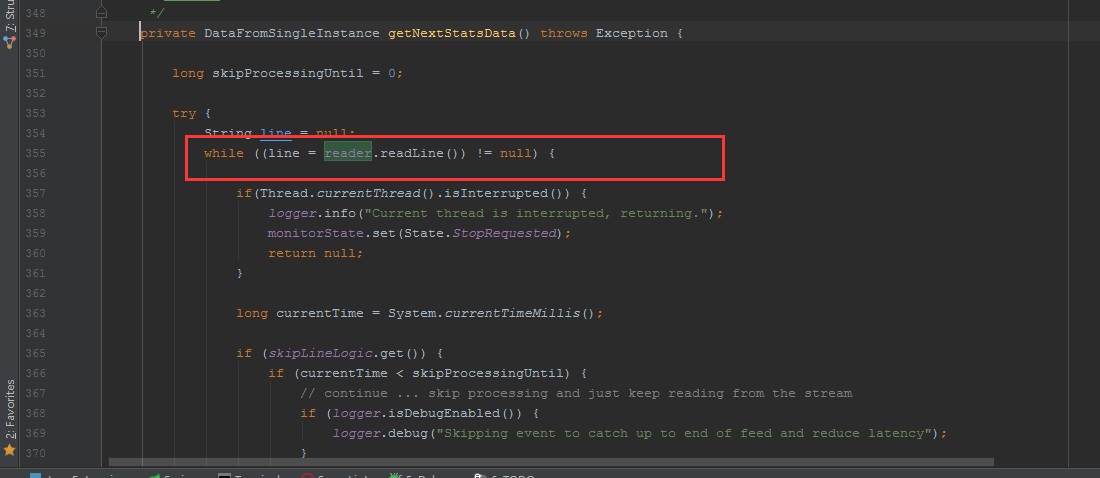
那么派发器是什么呢,它的实现查看TurbineDataDispatcher
查看它的pushData方法
发现调用的是tuple.pushData(statsData);而tuple其实就像一个管道,查看HandlerQueueTuple的pushData方法
public void pushData(K data) {
if (stopped) {
return;
}
boolean success = queue.writeEvent(data);
if (isCritical()) {
// track stats
if (success) {
counter.increment(Type.EVENT_PROCESSED);
} else {
counter.increment(Type.EVENT_DISCARDED);
}
}
}
看到queue.writeEvent(data)、往队列里写数据
这个队列又是什么呢?
其实就是一个事件队列EventQueue,查看它的写事件方法
public boolean writeEvent(T event) {
if (count.get() > maxCapacity) { // approx check for capacity
return false;
}
count.incrementAndGet();
queue.add(event);
return true;
}
如果队列中的长度大于maxCapacity,将不会再往队列里填充数据。
当客户端连接上的时候,queue就会被消费。如果客户端没有连接上的时候,queue读出来,经过一系列的操作会写回queue中,直到队列满了就不在写了。
1、当没有客户端连接上的时候
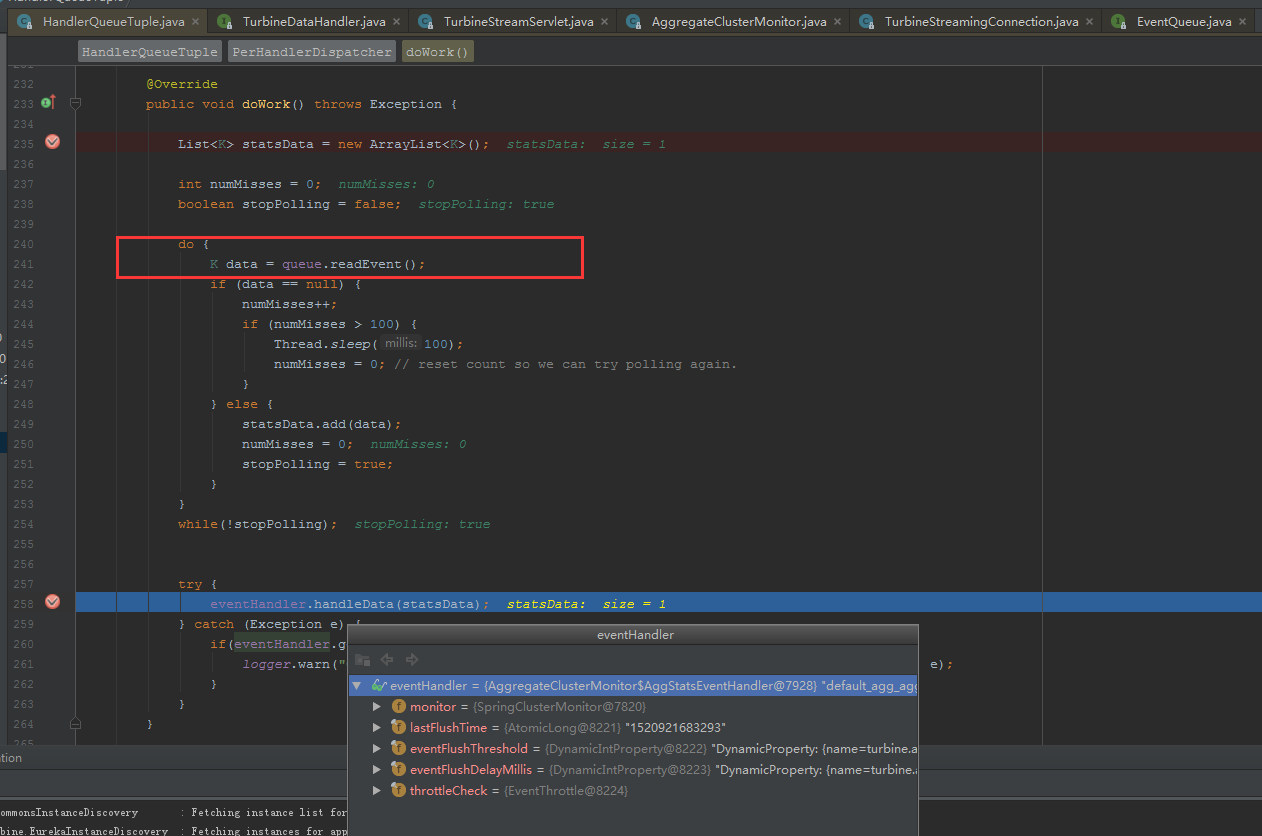
eventHandler经过一些列的处理,数据会被写回到queue中
2、当有客户端连上的时候,假设我们通过浏览器地址栏输入了
http://localhost:10000/turbine.stream?cluster=default
此时
我们看到eventHandler为TurbineStreamingConnection,见下图

handlData()就变成了TurbineStreamingConnection中的方法
public void handleData(Collection<T> data) {
if (stopMonitoring) {
// we have been stopped so don't try handling data
return;
}
//将数据写到steamHandler中
writeToStream(data);
}
writeToStream()中有个关键的操作streamHandler.writeData(jsonStringForDataHash)
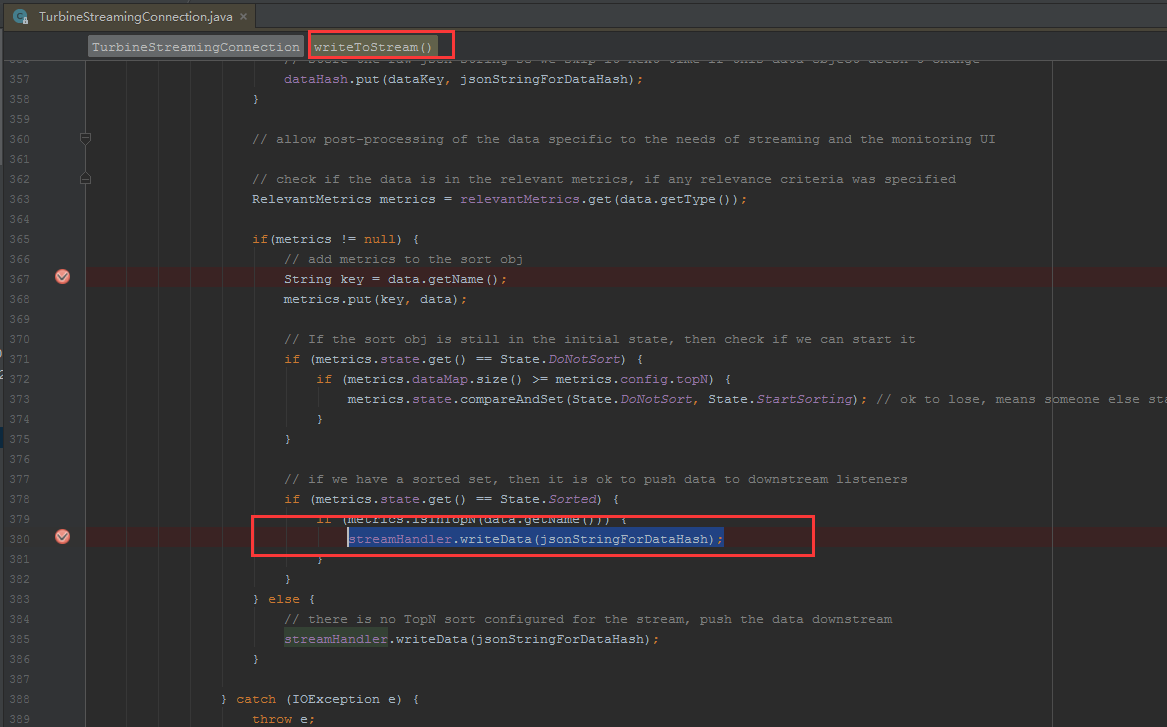
writeData()方法就可以将数据写到response中

客户端访问http://localhost:10000/turbine.stream?cluster=default的时候,其实就是通过TurbineStreamServlet获取到响应结果的。



